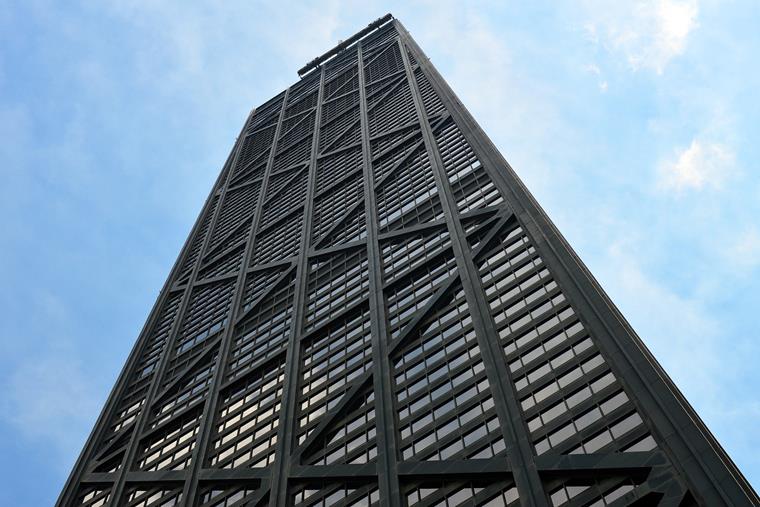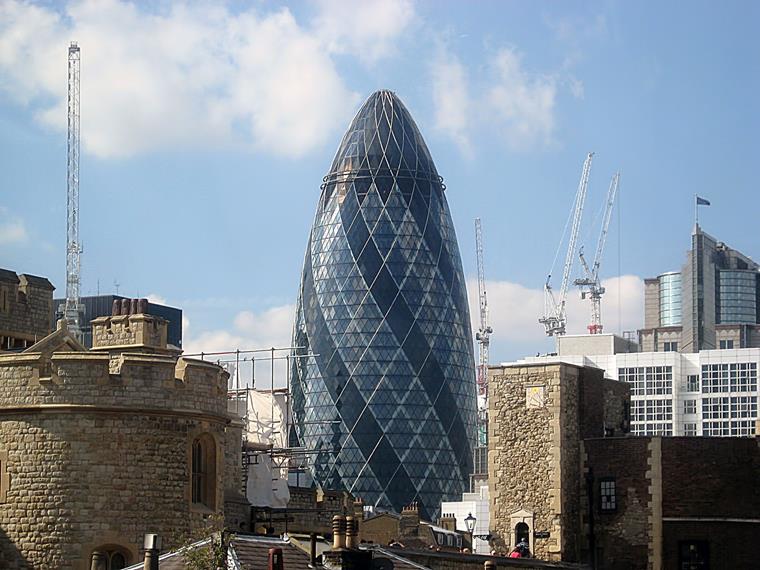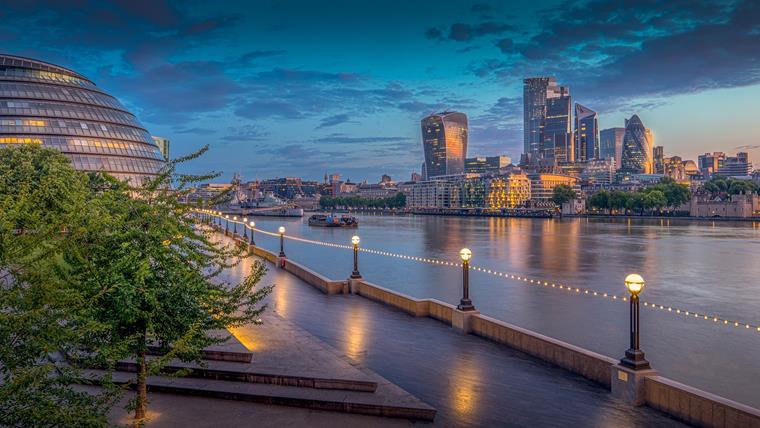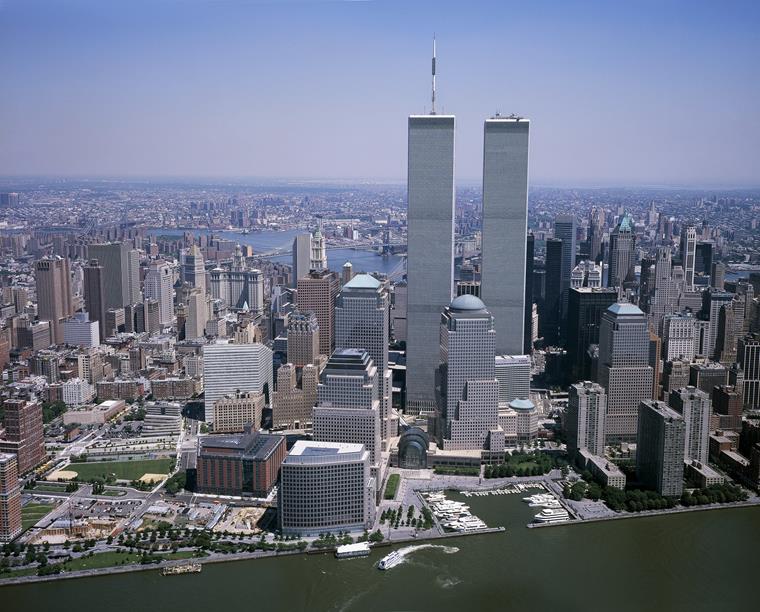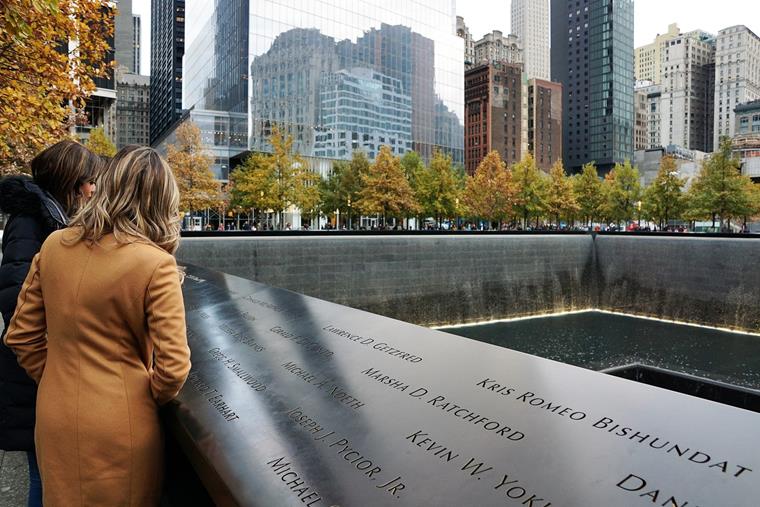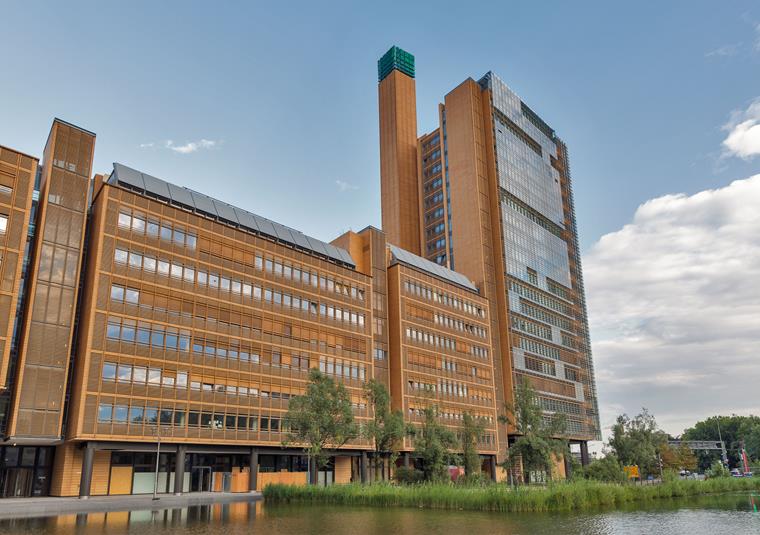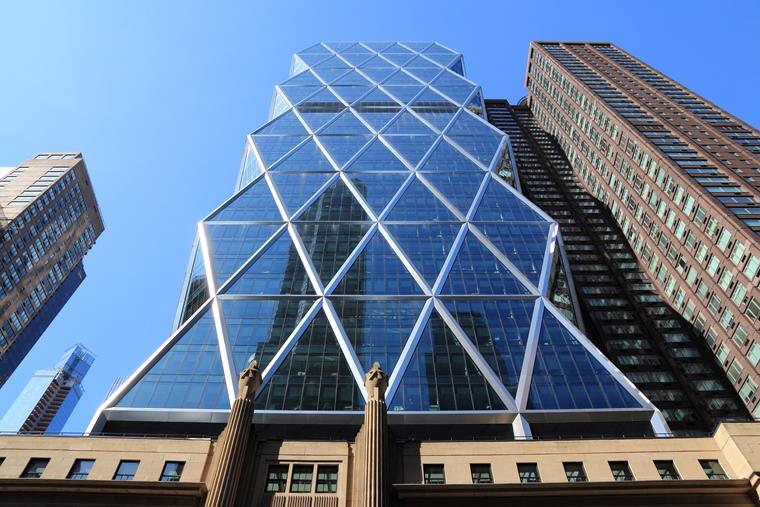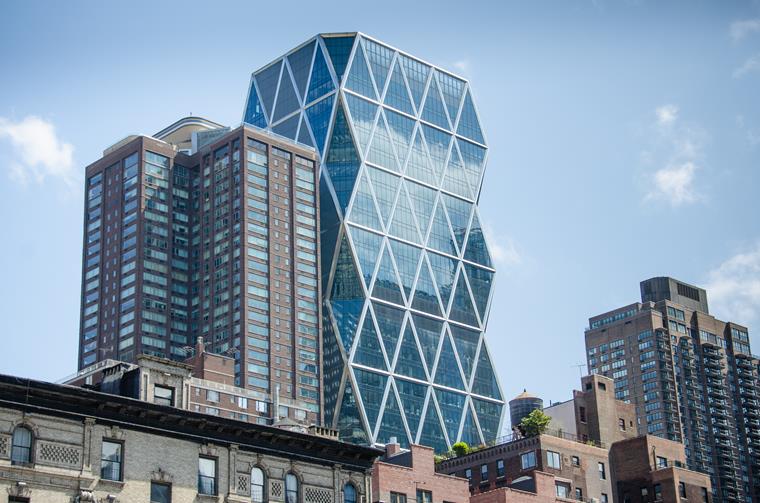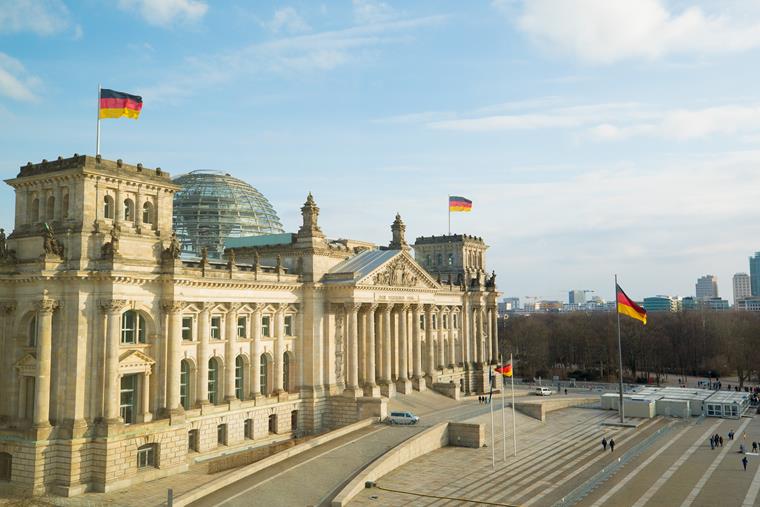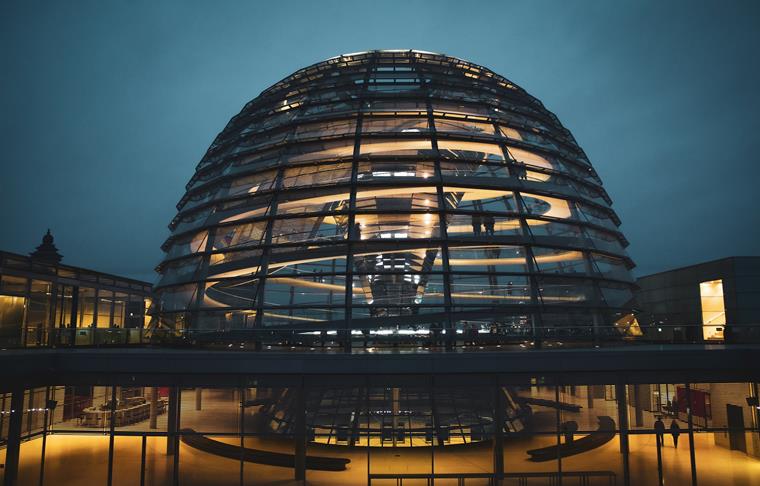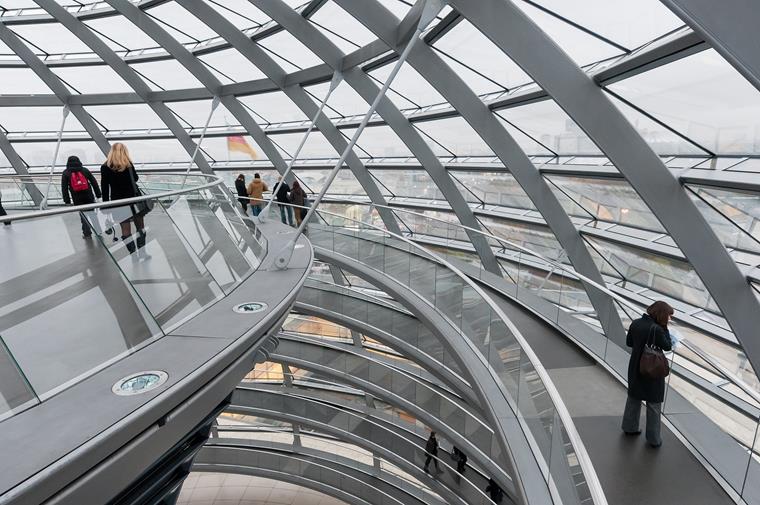The modern architectural style is based primarily on economic and social changes. We remember: sober facades, cost-efficient construction with a focus on functionality. This way of the construction industry gave rise to counter-movements. We have already presented some of them in our blog—and we are adding another one now.
In contrast to other architectural styles, high-tech architecture is still used today when it comes to implementing new construction projects. The almost rebellious attitude towards sober, favorable architectural styles of modernism became apparent as of the end of 1970s.
High-tech architecture arose from the general fascination for technology at that time. We remember: Technological progress, the space race, the beginning of the science fiction hype – the whole world wanted technology in every area of daily life. Previously unloved technical construction methods suddenly had aesthetic value. The movement of high-tech architecture found its way into the mainstream of our society, where it has remained to this day.
However, what is high-tech architecture all about? In this blog post, we take a closer look at the most important features of high-tech architecture, and let some high-tech architecture buildings take our breath away. Are you ready?
Features of High-Tech Architecture
- Visible load-bearing structures and supply systems
- Industrial production methods
- Use of metal, glass, plastic ("clean" building materials)
- Interchangeable modules ("plug-in" elements)
- Emergence of the first computer-aided structural analysis programs
Particularly exciting: To live up to the term of high-tech architecture, technologies from the aerospace and power engineering, among other things, were used to get the most out of each building. The construction industry has experienced an enormous growth of technical innovations here.
In addition to all the technology, most of the high-tech architecture buildings put great emphasis on ecological aspects. This included sustainability programs developed in cooperation with other specialists. However, in order to foreground the aesthetics of pure technology, such solutions have been integrated rather inconspicuously.
Inspiration from the animal kingdom was often used, such as in the construction of the Eastgate Center in Zimbabwe. In line with the principle of biomimicry, the structure of the building is based on the structure of a termite mound to achieve natural ventilation.
Examples of High-Tech Architecture
Now that we know what features to look for, let's take a look at some examples of high-tech architecture. Each of these fascinating buildings is unique and a fascination in its own. So let's go on a journey around the world.
The Gherkin
London, UK
Is it a bird or a plane? No, it is – a gherkin? The narrow, twisted shape of the Millenium Tower is actually somewhat reminiscent of a pickled cucumber. The building has a really striking outline that we have already talked about in another blog post.
In 1992, the architect Norman Foster created the original design of the Millenium Tower as a skyscraper with an unusual height for London of 386 m (1,266 ft). However, the London Building Act regulated that no building was allowed to be higher than St. Paul's Cathedral. So the height was reduced to 180 m (590 ft) – quite literally.
Ultimately, it was up to the engineers to keep the view of the famous cathedral clear and to avoid possible downwinds at the same time. Therefore, the design was revised, and the result was the well-known gherkin. The twisted facade deflects downwinds and eliminates the major air turbulences. At the same time, the view of the cathedral remains unobstructed, and in 2004, the office building was opened.
The features of the high-tech architecture are easily recognizable here. The steel and glass office tower has a special supporting structure that is not hidden, but clearly visible through the glass. Two helix strands connect to each other—really impressive.
As is usual for high-tech architecture, the energy efficiency and sustainability of the building cannot be recognized at first glance. Yet these aspects were extremely important for the design and construction. The office space extends across the interior in a ring shape, while the supply systems are housed in the core of the building.
Computer technology controls the ventilation, with cover slabs and windows opening and closing depending on the mood of the weather outside. Atria rise up to six stories, providing natural ventilation in the interior. Definitely technology that inspires.
World Trade Center
New York City, USA
One of the most famous construction projects in the world with a tragic history: pretty much everyone knows the World Trade Center in New York. The building complex included far more than the two known twin towers. The total usable floor area of the seven buildings was 1,240,000 m² (13,400,000 ft²) These dimensions even required the complex to have its own zip code.
"The Mall" was created under parts of the complex, a six-story underground shopping mall, not far from the World Trade Center subway station, which was considered the hub of all local staff traffic. Furthermore, an underground parking garage provided space for 2,000 cars.
The sheer size of this construction project is impressive. If we take a closer look at pictures and reports, it is noticeable that the twin towers in particular were very different from other skyscrapers of the time. In most high-rise buildings, the facade has one main function: to cover the structure itself. The twin towers, however, were designed in such a way that their external skeleton actually had a load-bearing function.
The basic structure consisted of two tubes pushed into each other. Among other things, the outer tube absorbed wind loads, while the inner tube only transferred the vertical gravitational forces. Similar to The Gherkin, the elevator shafts, sanitary facilities, and stairwells were located in the middle core, that is, the inner tube. The towers, as well as the other main structures of the World Trade Center, were calculated on an IBM 1620 computer that worked with punch cards.
Another feature of the high-tech architecture is the generous use of prefabricated modules. For example, the steel beam element of the facade and the floor element were industrially prefabricated in a steelworks so that the modules only had to be assembled on the construction site. This saved time and money. The north tower, for example, was ready for use in 1970, just two years after the start of construction.
The structure of the twin towers was designed against the worst earthquakes and hurricanes, only they could not withstand the second terrorist attack on September 11, 2001. As a result of the impact of two airplanes, the towers collapsed and damaged the surrounding buildings so severely that they had to be demolished as well.
Today, there are many reminders of the tragedy in the new building on the Ground Zero. Probably the most famous building of the newly built complex is the One World Trade Center skyscraper, which opened in 2014.
Debis Haus
Berlin, Germany
In contrast to other high-tech buildings, the first special feature of the Debis Haus, now known as the Atrium Tower, can already be found in the facade. The architect Renzo Piano created a master plan for the entire district and designed the Debis Haus building with terracota panels. He deliberately avoided using steel or glass surfaces. On the other hand, the stairwells are completely open with their steel supporting structure and glass surfaces.
It was built between 1993 and 1997 as the headquarters of the Daimler-Benz subsidiary Debis. The tower with a height of 106 m (348 ft), which serves as a ventilation chimney for a nearby tunnel, can be seen from afar. The tower building with 23 storeys and the green Debis logo also quickly attracts attention.
What is not immediately obvious about the building, as is usual for high-tech architecture, is that it has sustainable and ecological aspects. A special combined heat and power plant with cogeneration ensures pleasant temperatures throughout the building. Parts of the facade have a sort of second outer shell made of glass, which allows for natural ventilation due to the adjustable slats. Large areas of the roof surfaces are also planted, and the collected rainwater is used to flush toilets, among other things.
After the termination of the Debis subsidiary, the Debis Haus building was used as an atrium tower for office purposes. However, the last tenant moved out in 2021, and the building has been empty ever since.
Hearst Tower
New York City, USA
The Hearst Magazine Building was built in 1928 in Art Deco style, but was never completed due to a lack of money. The six-story building was declared a historical monument due to its striking sandstone facade, but remained in its unfinished state for a long time.
A new administrative office was soon needed for the growing company and the decision was made to extend the unfinished building in a rather unusual way. The old building was cored except for the listed facade and converted into a large lobby. Again, the architect was the Londoner Norman Foster, a well-known name not only in terms of high-tech architecture.
Since 2006, after three years of construction, the new glass building has risen from the sandstone-colored base. The two parts are connected by reinforced concrete columns and a glass skylight. Since then, around 1,800 to 2,200 employees have been working in offices with a ceiling height of an incredible 4 m (13 ft).
Typical for the buildings of high-tech architecture is the exhibited steel structure, which is a real eye-catcher with its diagonal structure. The triangular frames each reach up to four floors. And there is something else special about the Hearst Tower: its sustainability. Not only the operation of the building, but its construction set new standards.
The innovative design of the supporting structure saved about 20% of material. Moreover, 85% of the steel used comes from recycled sources. The skyscraper is also much more environmentally conscious in operation than comparable buildings.
Various measures can save 25 % of energy costs and collected rainwater also reduces water consumption by 25 %. A three-story water sculpture, also known as an Icefall, provides continuous air humidification, and thus a pleasant working climate.
As with many buildings of high-tech architecture, many things are controlled by intelligent computer systems. For example, the natural incidence of light is regulated independently by sensors in order to save on additional light sources.
In 2006, Hearst Tower was the first sustainable skyscraper in New York to gain gold certification under the LEED program, and even achieved the platinum status in 2012 due to additional measures.
Dome of the Reichstag Building
Berlin, Germany
A dome was already enthroned on the Reichstag building in 1900 – but it is not the same today as it was then. On the night of February 27-28, 1933, the Reichstag was on fire. To this day, it is still not clear who set the fire, even though the NSDAP, which had come to power shortly before with Adolf Hitler as the chancellor, was strongly suspected.
During the occupation of Berlin, fighting took place both inside and outside the building and the Reichstag, which had already been affected by the fire, suffered further serious damage. Eventually, the dome, which was in danger of collapse, had to be blasted out in the mid-1950s, supposedly for safety reasons.
For a long time, the building remained without its dome. Only after the German reunification, the Reichstag building came back into focus. The first plans for a walk-in glass dome were drawn up as early as 1988, before the fall of the Berlin Wall. The origin of the first ideas for the conversion of the Reichstag into a possible new parliament building was the architect Gottfried Böhm. It was not until June 1990 that Berlin was chosen as the capital and the choice of the parliament building was given to the Reichstag.
In addition to several renovations and extensions, the plan for the dome also continued to take shape. Finally, the famous London architect Sir Norman Foster, about whom we have already read a lot, obtained the coveted commission for the extension and expansion of the Reichstag into a modern parliament building with a glass dome.
In 1999, the time had finally come: the reconstruction of the Reichstag was completed, and from now on, the dome allowed pleasant light to stream into the plenary chamber via a funnel of mirrors. But artificial light is not the only thing that can be saved. From the outside, it seems to be a normal steel and glass structure, but the sustainability in the dome concept is integrated very subtly, which is typical of high-tech architecture.
Alignable aluminum and glass panels on an outer shell allow to control the amount of incident sunlight on the inner shell. Here, the thin fiberglass provides light scattering that both avoids glare and provides pleasant light for working. Depending on the external conditions, it is possible to automatically open the flaps between the two layers to achieve natural air circulation.
Furthermore, the dome is part of a sophisticated ecological heating system. Warm air from the Reichstag's interior, generated by an efficient combined heat and power plant, rises into the dome and is released to the outside via an open flap. All systems are interconnected and work fully automatically. In any case, the glass dome of the Reichstag building is an impressive achievement of modern engineering and an absolute tourist attraction.
Summary: High-Tech Architecture
After all these impressive modern buildings, one thing remains to be said: The courage to prevail against contemporary sober architectural styles was certainly worth every mocking comment. Fascinating buildings are still being built today, mostly out of steel and glass, which proudly present their supporting structure instead of having to hide it.
The built-in technology with intelligent, fully automated systems not only enables a pleasant stay, but above all, unobtrusively integrated sustainability concepts. Modern construction does not always have to be associated with environmental sins, even if high-tech architecture does not look particularly ecological at first glance.
We can adopt this idea in our current construction industry. We have so many creative opportunities to try new things to make our buildings as sustainable as possible in the construction and later in the operation. This approach seems to have somehow been lost in many construction projects in our city centers today. Old reinforced concrete is simply cheaper than innovative solutions.
The public image of glazed steel structures was unthinkable in the 1950s. However, it is difficult to imagine our cities without high-tech architecture today. Times are changing and so is the construction industry.
So we can only hope that a new counter-movement will soon prevail in legislation, architecture, and engineering to ensure a new turnaround in the industry. A green future with sustainable construction and buildings where people can feel comfortable with a clear conscience— that would be desirable.
